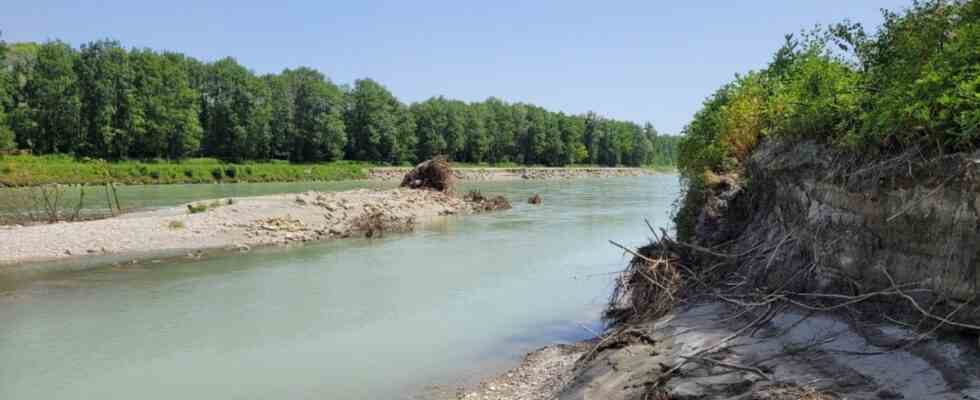The next intervention might seem a bit rough at first. Because this Tuesday, near the Upper Bavarian town of Tittmoning, construction workers are to start driving a sheet piling wall five meters deep into the floodplain along the Salzach for almost a kilometer. But the wall will not be visible later, according to the Traunstein Water Management Office. It is intended to protect the dyke when the rigid bank reinforcement is then dredged away in order to give the river, which flows largely like a canal, more space and more natural banks.
A lot of water flowed down the Salzach before the tight corset of the German-Austrian border river laid down by a state treaty in the 19th century was loosened somewhat. In terms of length, however, it can flow freely for more than 50 kilometers and is therefore the longest undeveloped Alpine river, at least in Bavaria. But from the perspective of the state government, that should finally change.
“My idea would be that we take the next big step on the Salzach,” confirmed Prime Minister Markus Söder (CSU) recently in Töging, less than 25 kilometers as the crow flies from Tittmoning. The turbines of the Töginger Inn power plant, which the Austrian Verbund AG officially put into operation on Friday, vibrated beneath him and the entire marquee. It produces a quarter more electricity than its listed predecessor, a total of around 700 gigawatt hours per year, enough for 20,0000 households. One wants to make oneself as independent as possible with “home hydropower”, said Söder, also with a view to “a large project on the Salzach”.
Mind games like this have been around for decades. Again and again, a district administrator in Berchtesgadener Land or in Traunstein came up with power plant ideas for the Salzach. In view of the energy crisis caused by the war, the topic is currently booming again, and so the two CSU district administrators Bernhard Kern and Siegfried Walch have now spoken out. At least as far as Walch’s approximately 20 km of Traunstein river in the Tittmoning basin is concerned, there have long been plans.
So far, the association has proposed three power plants that would be flooded across their entire width and that together could produce 100 gigawatt hours of electricity per year. According to the strategy of the state government, new weirs and ramps should be made usable, which actually have a different purpose, namely to slow down the Salzach and prevent it from digging deeper and deeper into its bed and eventually breaking through below.
But new reports came to different conclusions: For all of this, at most one transverse structure is necessary in the Tittmoninger basin, it was said in 2019, and a current study commissioned by the authorities came to the conclusion this year that it can also be done without a ramp. But the state government had always assured that there would only be power plants on transverse structures that were necessary anyway. Söder doesn’t want to know anything about that anymore.
Karl Heinz Gruber is the managing director of the “Verbund Innkraftwerke GmbH” and also has plans for the Salzach.
(Photo: Matthias Köpf)
The association was asked for a proposal years ago and, together with the Innsbruck hydraulic engineering professor Markus Aufleger, developed a lighthouse solution that could be used as an example for similar situations worldwide, says Karl Heinz Gruber, who manages the business of the Inn power plants for the association. In the Tittmoning Basin, plans are currently being made with just one plant and an annual production of around 30 gigawatt hours, but this requires a transverse structure to be created by the state and political will. But he had “changed several times”.
While Traunstein’s district administrator is now talking about three power plants and 100 gigawatt hours, the attitude in the neighboring district of Altötting has not changed. Power plants on the Salzach are unanimously rejected, says District Administrator Erwin Schneider (CSU) and agrees with the local member of the state parliament, Martin Huber. Nothing changes in and for Altötting, not even his opinion about a power plant on the Salzach, says Huber, who has also been Secretary General of Söders CSU since May and as such “of course a friend of hydropower”.
The attitude of the many nature conservation organizations on both sides of the border, which formed the “Salzach Habitat Action Group” in 1987, has not changed for decades. The electricity yield from the planned power plant corresponds to that of two or three wind turbines and is therefore in a very bad relationship to the ecological consequences, says spokesman Erich Prechtl. If necessary, a lawsuit will prevent the Salzach from being built for this purpose.

